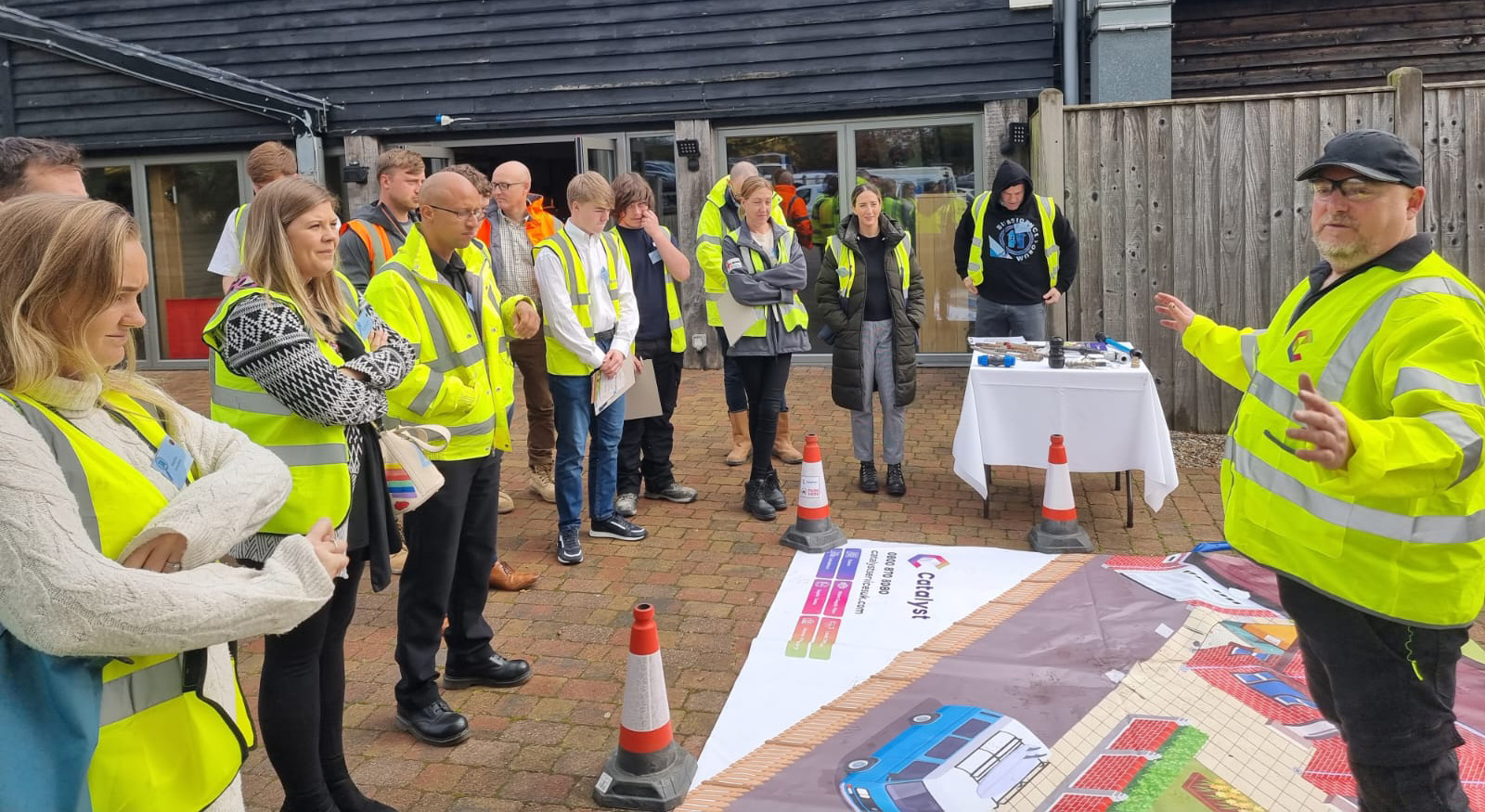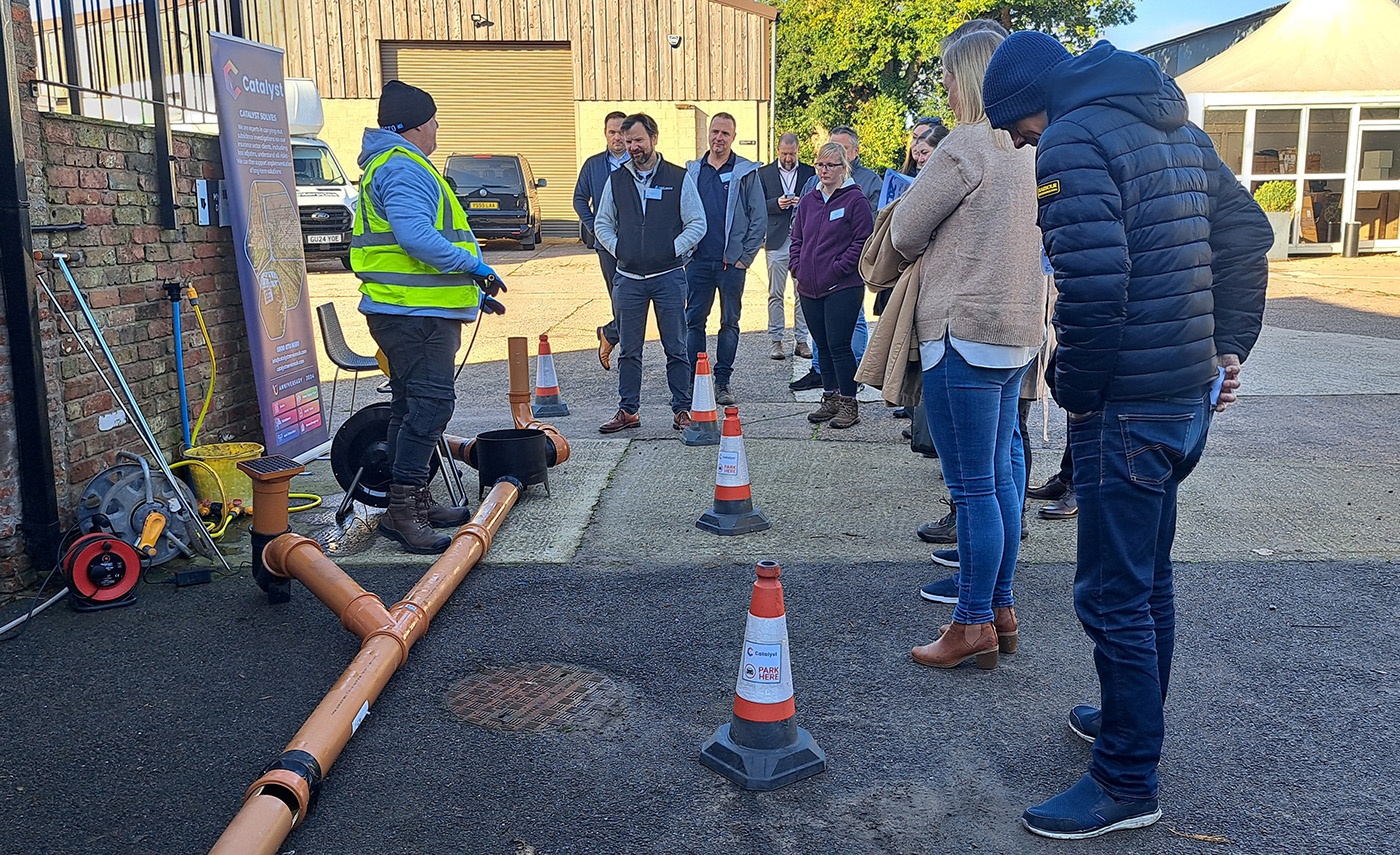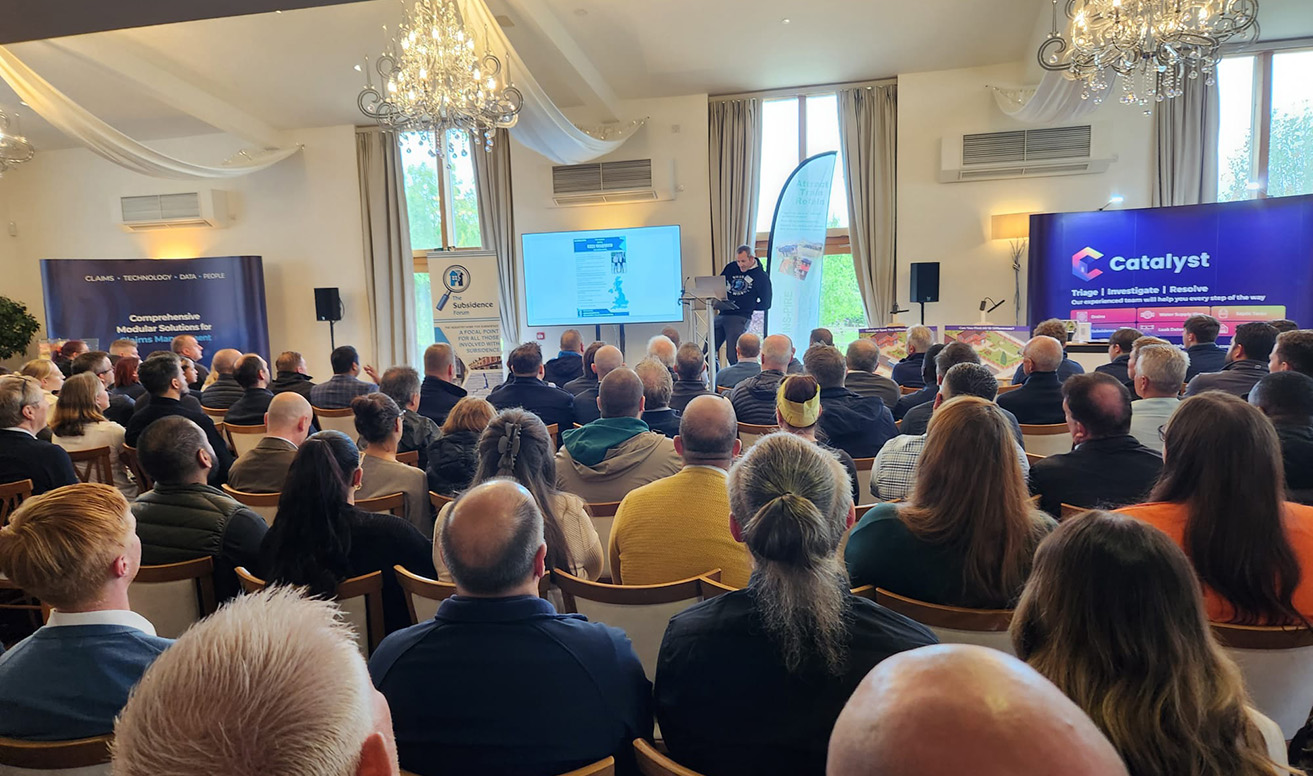October 23, 2025
Catalyst drainage expertise contributes to subsidence training day success
Drainage expertise from Catalyst Services UK has contributed to the Subsidence Forum Training Day...

Insurance claims specialist Catalyst Services UK will be demonstrating drainage pipe lining techniques at the Subsidence Forum Training Day.
The event has added urgency as the UK is believed to have entered a period of subsidence surge, which is likely to put a greater number of properties at risk from subsidence.
Subsidence occurs when ground conditions cause soil strata below building foundations to drop. This leaves the buildings less supported, resulting in them becoming damaged.
The most common sign of this is cracking in walls, ceilings and floors, though in extreme cases, buildings can partially of fully collapse.
Catalyst is teaming up a member of its operational network to show how lining of pipes can reduce subsidence risks or rehabilitate them if they have been damaged by subsidence.
The Subsidence Forum is the industry home for subsidence, providing an opportunity for technical practitioners, insurance claims specialists, academics and government agencies to debate key issues.
Catalyst Managing Director Brad Jackson said: “We have been very pleased to deliver technical demonstrations at the training day over recent years, and this year is no different.
“It is more important than ever to investigate future trends in the development of subsidence, given that climate change is predicted to make the issue more complex and widespread.”
The UK’s record dry and hot spring and summer have caused soils, in particular clay soils which are most closely linked to subsidence, to dry and shrink significantly, explained Brad Jackson.
He added: “Trend data shows this is in line with previous subsidence surges in 2022, 2018 and 2003. Our subsidence insurance claims instructions are up on last year and other industry experts also conclude we are entering a subsidence surge.
“How long it could last depends on a number of factors, including weather patterns over the autumn. What subsidence does do is increase costs for insurance companies and property owners.”
Being proactive, and understanding the full range of risks that properties may face, is essential to mitigate the effects of extreme weather events like storms. Here are 6 key action points you should consider:
Around 150 attendees are booked onto the Subsidence Forum Training Day. They will rotate in groups around five guided demonstrations about:
Paul Duddle said: “Many of the people attending our training day will have the impact of a subsidence surge high on their priority lists and are likely to already be experiencing a rise in demand for their services.
“Now is a good time to remind ourselves of best practice in managing subsidence. Our attendees include insurance claims specialists and property managers who are always keen to learn more about what is a complex issue. This year they’re likely to put what they see and hear to immediate good use.”

A priority over the coming year, said Paul Duddle, will be to encourage a wide mix of interested parties to join the Subsidence Forum to contribute their expertise and insights into improving decision-making, notably insurance companies, loss adjusters, local authorities and government agencies.
Catalyst has chosen to lead a demonstration about drain repair techniques. During this demonstration delegates will be shown how common pipe defects can be repaired. These Include
Brad Jackson said: “Drains and sewers can be among the first assets damaged by subsidence. This can lead to blockages and sewer flooding that can, in turn, worsen the impact on a property.
“So, drainage problems can be a first sign of subsidence. Acting quickly is vital. When we receive a subsidence claim instruction, surveying a property’s drainage system is always one of the first steps.
“If action is needed to restore drains and sewers, CIPP lining is usually less costly and less disruptive, both in terms of the impact on a property and time taken. It also generates a smaller carbon footprint than excavating and replacing pipes.”

The Subsidence Forum Training Day is expected to be fully-subscribed event. However, at the date of publication of this article, there were still some places left.
To book delegate tickets, go to: https://lnkd.in/eBYxwtp5
For free apprentice training spaces or to enquire about booking an exhibition stand to promote your organisation at the event, email: [email protected]
Catalyst delivers a comprehensive range of high-quality belowground and home emergency services to resolve claims on behalf of a growing number of insurance providers, brokers, and loss adjusters.
They include: drainage investigations and repairs (mains and off-mains), water supply pipe repairs and replacement, water leak detection, subsidence investigations, and environmental services.
Telephone: 0333 004 8008
Email: [email protected]